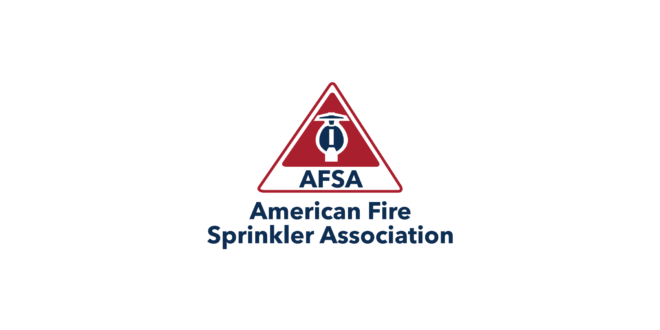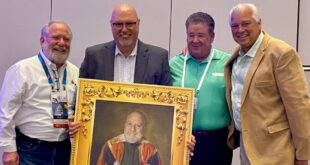A Call for Action on NFPA 25
EDITOR’S NOTE: This article appeared in the January/February 2022 issue of Sprinkler Age. It has been revised for clarity since being published and is printed below.
The end is neigh! Listed antifreeze solutions have been required in new systems since the 2013 edition of NFPA 13, Standard for the Installation of Sprinkler Systems, but the sun has been setting on nonlisted antifreeze in existing systems since language was introduced in the 2011 edition of NFPA 25, Standard for the Inspection, Testing, and Maintenance of Water-Based Fire Protection Systems. As the requirement currently states in the 2011, 2014, 2017, and 2020 editions of NFPA 25:
5.3.4.4 Except as permitted by 5.3.4.4.1 and 5.3.4.4.3, all antifreeze systems shall utilize listed antifreeze solutions.
5.3.4.4.1 For systems installed prior to September 30, 2012, listed antifreeze solutions shall not be required until September 30, 2022, where one of the following conditions is met:
- The concentration of the antifreeze solution shall be limited to 30 percent propylene glycol by volume or 38 percent glycerine by volume.
- Antifreeze systems with concentrations in excess of 30 percent but not more than 40 percent propylene glycol by volume and 38 percent but not more than 50 percent glycerine by volume shall be permitted based upon an approved deterministic risk assessment prepared by a qualified person approved by the authority having jurisdiction.
Premixed solutions utilizing 30-percent propylene glycol or 38-percent glycerine have been permitted to remain in accordance with section 5.3.4.4.1(1) and where a risk analysis has been prepared concentrations up to 40-percent of propylene glycol or 50-percent glycerine are permitted where approved in accordance with section 5.3.4.4.1(2). Additionally, both NFPA 13 and NFPA 25 permit nonlisted premixed solutions of propylene glycol to be used in ESFR systems where the ESFR sprinklers have been specifically listed for that use in accordance with section 5.3.4.4.3. It should be noted that the inspection, testing, and maintenance (ITM) standard only permits the nonlisted premixed solutions to be utilized until September 30, 2022. After that time, an antifreeze system cannot be used unless it is with a listed solution complying with all of the listing requirements. These requirements intended to put pressure on manufacturers to start developing listed solutions and to have a resolution in the near future. That intent worked and there are now several listed solutions on the market, and manufacturers continue to provide products with lower and lower minimum-use temperatures.
The Loophole
Public comments were submitted for the 2023 edition of NFPA 25 to revise section 5.3.4.4 and remove the allowances in section 5.3.4.4.2 since the standard would be adopted and published after the September 30, 2022 sunset date. The technical committee made a second revision based on this proposal; however, they did not do exactly what the submitter suggested. In the NFPA standard development process, this action is known as “Reject, but see.” Because the committee did not remove section 5.3.4.4.2 in its entirety for the 2023 edition, there is now a major conflict in the application of NFPA 25 across the United States—and the world—due to jurisdictions across the globe adopting various editions of the ITM standard.
The proposed language in the 2023 edition does not allow sprinkler systems to be refilled with nonlisted antifreeze – only those premixed solutions that test within their approved concentration limits (less than 30% propylene glycol or less than 38% glycerine) are permitted to remain. Higher concentrations in the premixed solution would not be permitted as the approved deterministic risk assessment was deleted as an option in SR-11. This allowance for nonlisted premixed solutions to remain creates a scenario where sprinkler contractors would be put in a position where existing systems filled with nonlisted premixed solutions would have to be refilled with a listed solution or converted to dry systems in jurisdictions using the 2020 edition of NFPA 25 and earlier, only to have that very same nonlisted premixed solution be acceptable to remain when the jurisdiction adopts the 2023 edition a few years later.
Another fatal flaw in the proposed language is the option to utilize listed antifreeze solutions outside of their listing requirements. The result of FR-75 and SR-11 would now permit listed solutions to ignore the installation instructions of the manufacturer.
5.3.4.4.1* Where used to replace nonlisted antifreeze solutions, listed antifreeze solutions shall be permitted to be used outside their listing limitations, provided the temperature range limitations are not exceeded.
While the intent was to permit larger volumes of listed antifreeze to be installed and follow the remaining requirements of the listing, the proposed language only requires the minimum use temperature to be followed when replacing nonlisted solutions with listed solutions. Using a solution outside of its listing parameters can be problematic based on the rigorous testing that these listed solutions went through based on the criteria contained in UL 2901, Antifreeze Solutions for Use in Fire Sprinkler Systems. While this option is only available when replacing a nonlisted solution with a listed one, consideration should be given to install the listed solution following as many of the installation requirements as possible.
NFPA 25 does not have a retroactivity clause, and all the requirements become enforceable on all existing systems upon adoption. Due to this special circumstance, there needs to be a modification to the standards to correct the antifreeze loophole. There are two options to remedy the situation which include a Notice of Intent to Make a Motion (NITMAM) to reverse the second revision made by the committee or a Tentative Interim Amendment (TIA) needs to be submitted for the 2011, 2014, 2017, and 2020 editions of NFPA 25 to revise the sunset clause and permit premixed solutions to remain.
Option 1: NITMAM
According to the regulations of NFPA “Anyone wishing to make an allowable amending motion at an NFPA Technical Meeting must declare their intentions by filing, within the published deadline, a Notice of Intent to Make a Motion (NITMAM). NITMAMs submitted on Public Comments (PC) can only be submitted by the original submitter of the PC or their duly authorized Designated Representative. NITMAMs can be made by anyone if the NITMAM is on a Committee Comment, Second Revision, Second Correlating Revision, or in the case of a new standard, a NITMAM to Return the Entire NFPA Standard.” (National Fire Protection Association, 2021)
If it is the opinion of the industry that only listed solutions should be utilized in antifreeze systems, then a NITMAM must be submitted to reverse the actions of the committee’s second revision. The NITMAM would be permitted to be made by the submitter of PC-141 to accept an identifiable part of the public comment which would revise sections 5.3.4.4.2 and 5.3.4.4.3 and their corresponding annex notes from the second draft. This would align the requirements of the ITM standard with the installation standard.
Option 2: TIA
Within the NFPA standard development process, “Tentative Interim Amendments (TIAs) are amendments to an NFPA standard processed in accordance with Section 5 of the Regulations Governing the Development of NFPA Standards. TIAs have not been published in a First Draft Report and Second Draft Report for review and comment. An issued TIA automatically becomes a Public Input for the next edition of the standard and is then subject to all of the procedures of the standards development process. TIAs are published in NFPA News, the National Fire Code Subscription Service, and any further distribution of the standard after being issued by the Standards Council.” (National Fire Protection Association, 2021)
If it is the opinion of the industry that premixed solutions should be permitted to remain so long as the concentration tests within the appropriate levels, then a TIA is in order. The TIA would need to address the sunset date, which is present in NFPA 25 from the 2011 edition through the 2020 edition, and permit the premixed solutions to remain even after September 30, 2022, has passed.
Conclusion
The route taken to correct the discrepancy among the various editions of NFPA 25 depends on the merits associated with premixed solutions. The legacy antifreeze solutions mixed in the field created an ignitible (blame the NFPA 30 committee for the King’s English spelling of ignitable) solution, but the lower concentrations of premixed solutions have fared well over a short period of time.
Previously, high pressures and high concentrations of antifreeze caused an atomized solution to disperse from the sprinkler system and caused an increase in heat release rates. However, recent testing and use over the last nine years suggest that 30-percent propylene glycol or 38-percent glycerine premixed solutions add no additional negative impact to the fire control of a sprinkler system.
While the writing has been on the wall for over 10 years and several code cycles, it is perfectly acceptable to change your mind once new information has been presented. The use of premixed antifreeze solutions fills a gap in available technologies that would permit the colder environments to keep their antifreeze systems in service and not require a costly upgrade to a dry system – if that is even feasible. After the publication of the 2023 edition of NFPA 25, AFSA intends to submit and support a TIA to modify the language in the 2011, 2014, 2017, and 2020 editions of NFPA 25 and allow the use of low concentration premixed solutions to remain so long as they are maintained and tested in accordance with the rest of the ITM standard as recommended by the latest actions of the NFPA 25 technical committee.
References
National Fire Protection Association. (2021, November 15). Notice of Intent to Make a Motion (NITMAM) and the NFPA Technical Meeting. Retrieved from NFPA: https://www.nfpa.org/Codes-and-Standards/Standards-Development/How-the-process-works/Notice-of-Intent-to-Make-a-Motion
National Fire Protection Association. (2021, November 15). Tentative Interim Amendments, Errata, and Formal Interpretations. Retrieved from NFPA: https://www.nfpa.org/Codes-and-Standards/Standards-Development/How-the-process-works/TIAs-Errata-and-FIs
 ABOUT THE AUTHOR: Kevin Hall, M.Eng., P.E., ET, CWBSP, PMSFPE, is the coordinator of engineering and technical services for the American Fire Sprinkler Association (AFSA). He is a member of, and involved in, several National Fire Protection Association (NFPA) technical committees responsible for developing the model codes and standards including, NFPA 1 Fire Code, NFPA 13/13R/13D Installation of Sprinkler Systems, NFPA 20 Installation of Stationary Fire Pumps for Fire Protection, NFPA 30 Flammable and Combustible Liquids Code, and NFPA 915 Remote Inspections. He also represents AFSA on numerous UL standard technical panels responsible for revising and maintaining the product standards used in the sprinkler industry. He is a registered professional engineer in Delaware and Maryland, NICET III-certified in water-based system layout, a Certified Water-Based System Professional (NFPA), and a professional member of the Society of Fire Protection Engineers. He earned his Bachelor of Science and Master of Engineering degrees from the University of Maryland, College Park in fire protection engineering. Prior to his association and committee work, he worked for Reliance Fire Protection in Baltimore, Maryland as a project manager overseeing projects of various sizes and complexity for the Contracts Division.
ABOUT THE AUTHOR: Kevin Hall, M.Eng., P.E., ET, CWBSP, PMSFPE, is the coordinator of engineering and technical services for the American Fire Sprinkler Association (AFSA). He is a member of, and involved in, several National Fire Protection Association (NFPA) technical committees responsible for developing the model codes and standards including, NFPA 1 Fire Code, NFPA 13/13R/13D Installation of Sprinkler Systems, NFPA 20 Installation of Stationary Fire Pumps for Fire Protection, NFPA 30 Flammable and Combustible Liquids Code, and NFPA 915 Remote Inspections. He also represents AFSA on numerous UL standard technical panels responsible for revising and maintaining the product standards used in the sprinkler industry. He is a registered professional engineer in Delaware and Maryland, NICET III-certified in water-based system layout, a Certified Water-Based System Professional (NFPA), and a professional member of the Society of Fire Protection Engineers. He earned his Bachelor of Science and Master of Engineering degrees from the University of Maryland, College Park in fire protection engineering. Prior to his association and committee work, he worked for Reliance Fire Protection in Baltimore, Maryland as a project manager overseeing projects of various sizes and complexity for the Contracts Division.
 Sprinkler Age A Publication of the American Fire Sprinkler Association
Sprinkler Age A Publication of the American Fire Sprinkler Association

